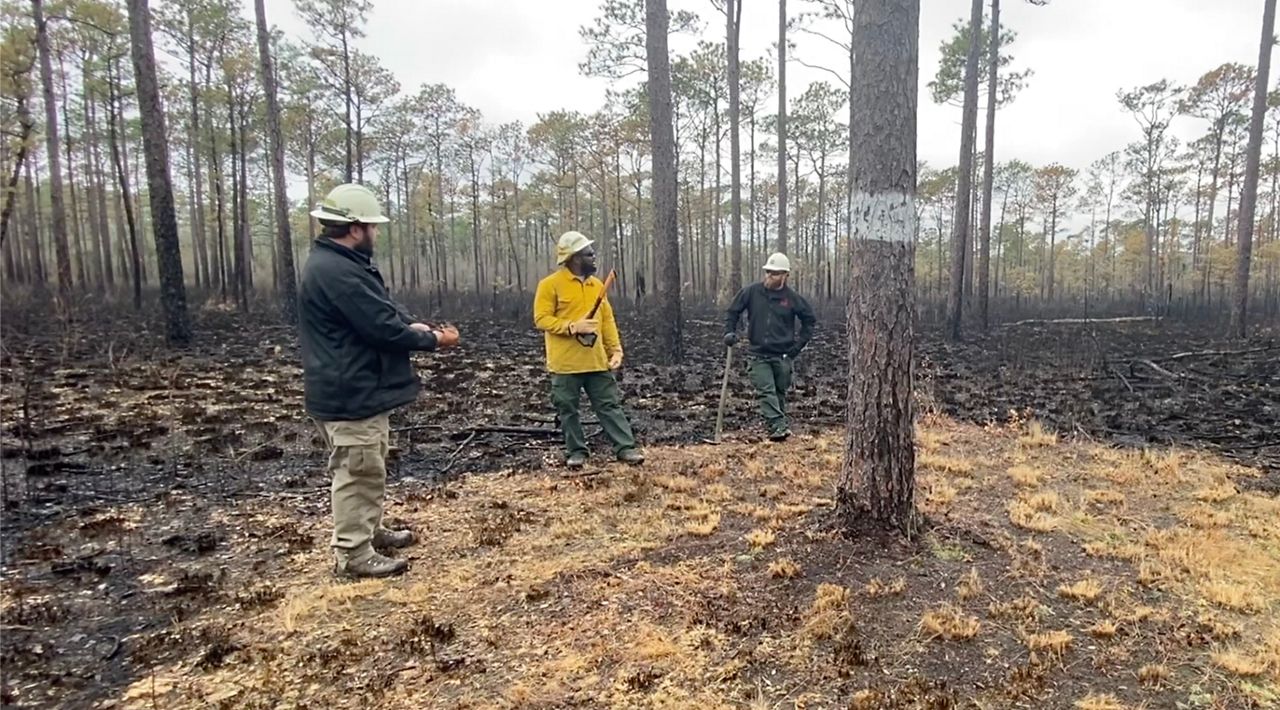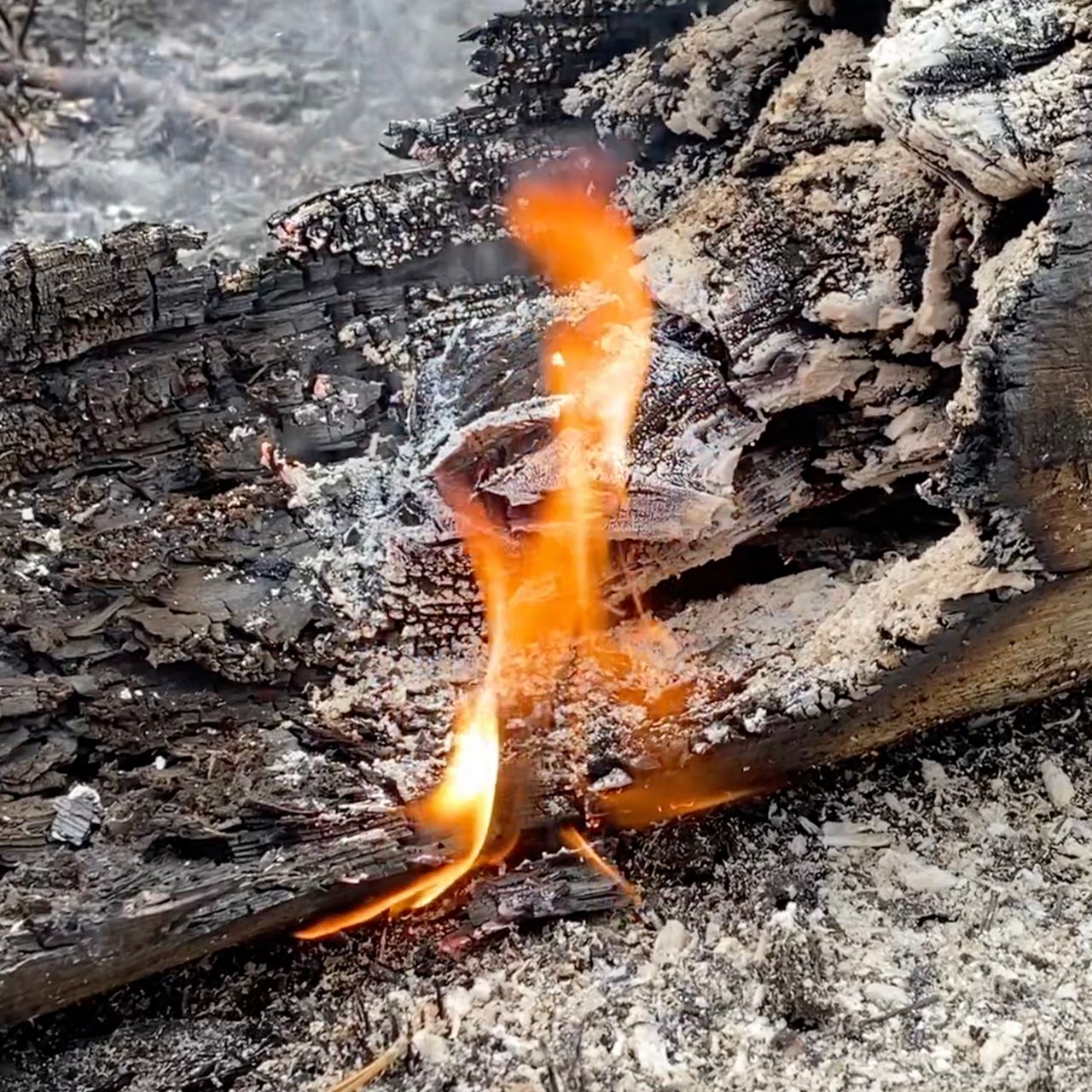CROATAN NATIONAL FOREST, N.C. — Throughout the year, we've seen wildfires pop up in the mountains on the western side of the state, and 2021 was the most active year for wildfires since 2016.
In the Croatan National Forest, fire management officers are in the middle of burn season. That means firefighters plan low intensity prescribed fires for thousands of acres of forest. These burns use up brush and fuel on the forest floor with the hopes that potential wildfires will be stopped before they spread.
David Nelson has been working in the Croatan for more than 20 years, and one of the biggest jobs he and his team face is controlled burns.
“We're trying on a landscape scale to do fire management and prescribed and controlled burning so that in the case of a wildfire we have reduced intensity because the units have already been treated,” Nelson said.
Related: Controlled burn scheduled for 2,000 acres in Macon County
These burns are doubly important because they protect the public from catastrophic wildfires and they restore natural forest habitats.
“A lot of our endangered species and our non-endangered species really thrive after prescribed burning,” Nelson said. “Because all we're doing is replicating the natural fire occurrence that came with lightning and even Native American use of fire.”
It's not an easy job. The planning begins a year in advance. On the day of the fire, Nelson and his team start preparing at 4 a.m. They'll ignite the fire around 10 a.m., and the burn will take four to five hours to complete.

To make sure the flames stay under control, they use features like swamps, streams and roads as natural barriers. They build control lines with bulldozers to protect houses. And they do burn preparations beforehand to protect endangered species, utilities poles and electrical boxes.
“So, we'll come out here,” Nelson said. “We have a nice low-intensity fire around the endangered species and around the edges where the homes are. Then we'll take the helicopter and light the interior where it gets a bit more intense.”
Things grow back quickly in the forest, so Nelson has to burn each area every two to three years.
“Burning is replicating what was naturally here to start with,” Nelson said. “And just over a short geologic time of 20 years you can see the difference that prescribed burning makes.”
After these prescribed burns are over, his team drives around the forest, making sure most of the flames are out. However, if a log or tree is still on fire, they let it burn up so doesn't act as fuel for the next fire. People driving by may be temped to call 911, but Nelson says there is no need and no threat of the fire spreading because the surrounding area has already burned.

